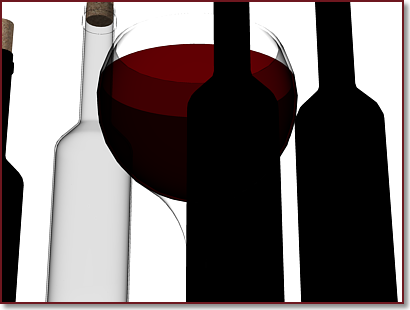Ray tracing traces the path of rays sampled from the light source to create realistic reflections and refractions.
To reduce the time required to generate reflections and refractions, rays are limited by trace depth. Trace depth limits the number of times a ray can be reflected, refracted, or both. You set the maximum trace depth, the maximum number of reflections, and the maximum number of refractions in the Advanced Render Settings palette.
The following example shows how ray-traced reflections and refractions greatly increase the realism of a scene. Max Depth = 8; Max Reflections and Refractions = 4.

When ray tracing is turned off, no reflection or refraction occurs.
The following example shows the same model with ray tracing turned off.

Trace depth controls the number of times a light ray can be reflected or refracted. Increasing these values can increase the complexity and realism of a rendered image, at a cost of greater rendering time.
The following example shows how increasing the trace depth improves the rendering. Max Depth = 4; Max Reflections and Refractions = 2.

Ray-tracing Controls
The Max Depth setting limits the combination of reflection and refraction. Tracing of a ray stops when the total number of reflections and refractions reaches the maximum depth. For example, if Max Depth equals 3 and Max Reflections and Max Refractions are both set to 2, a ray can be reflected twice and refracted once, or vice versa, but the ray cannot be reflected and refracted four times.
The Max Reflections setting specifies the number of times a ray can be reflected. At 0, no reflection occurs. At 1, the ray can be reflected once only. At 2, the ray can be reflected twice, and so on.
The Max Refractions setting specifies the number of times a ray can be refracted. At 0, no refraction occurs. At 1, the ray can be refracted once only. At 2, the ray can be refracted twice, and so on.